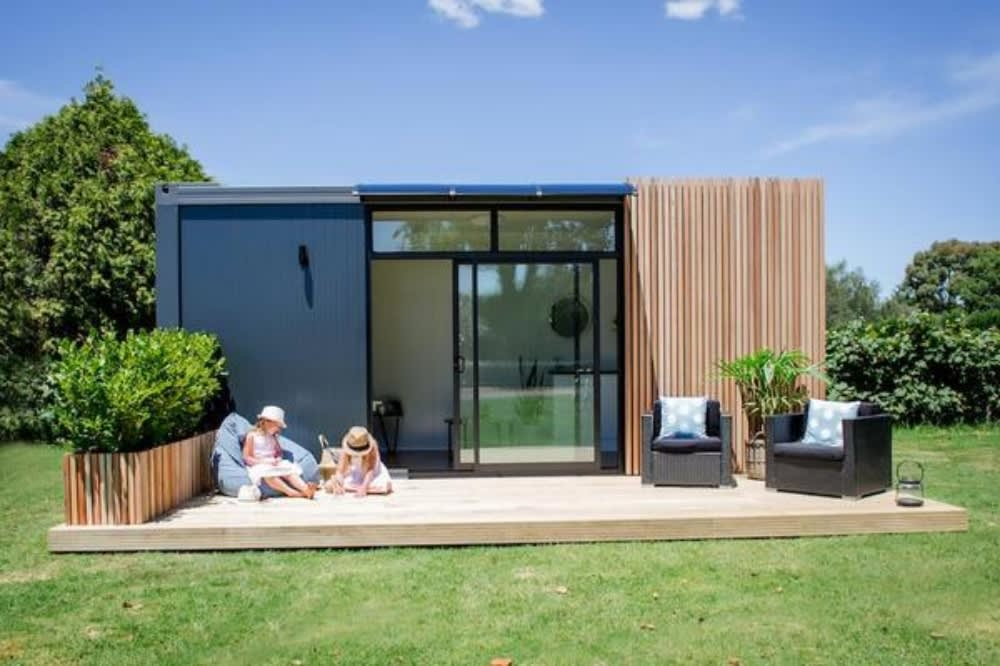In the ever-evolving landscape of housing solutions, pods have emerged as a revolutionary concept, challenging traditional notions of homes and living spaces. These modular and versatile structures have gained popularity for their flexibility, sustainability, and ability to adapt to various needs. In this article, we will explore the world of pods for homes, delving into their design, benefits, and the transformative impact they are having on modern living.
Defining Pods for Homes:
Pods are compact, self-contained living spaces that offer a range of functions, from providing additional living quarters to serving as standalone homes. These structures are characterized by their modular design, often resembling sleek and contemporary cubes, cylinders, or other geometric shapes. Pods can be prefabricated off-site and transported to a desired location, offering a faster and more efficient construction process compared to traditional homes.
Design and Customization:
One of the key advantages of pods for homes is the flexibility they afford in terms of design and customization. Homeowners can choose from a variety of sizes, shapes, and layouts to suit their specific needs and preferences. Whether used as a guest house, home office, studio, or a full-fledged residence, pods can be tailored to accommodate diverse functions.
- Compact Living: Pods are ideal for compact living solutions, making them suitable for urban environments where space is often at a premium. Their compact size allows for efficient use of space without compromising on functionality. Many pods design with smart storage solutions and multi-functional furniture to maximize the utility of the limited space.
- Modular Expansion: The modular nature of pods allows for easy expansion or reconfiguration as the need arises. Homeowners can start with a single pod and later add additional units to accommodate a growing family, changing lifestyle, or evolving needs. This adaptability is a stark departure from the rigidity of traditional home construction.
Benefits of Pods for Homes:
- Efficiency in Construction: Prefabricated off-site construction of pods significantly reduces the time and resources required for building. The controlled environment of a factory ensures precision and quality in the construction process. Once completed, the pods can be transported to the site and assembled in a matter of days, minimizing on-site construction time.
- Sustainability: Pods often embrace sustainable design principles, incorporating energy-efficient features and eco-friendly materials. Additionally, the controlled manufacturing process results in less waste compared to traditional construction. Some pods even design with off-grid capabilities, utilizing renewable energy sources for power and incorporating water-saving technologies.
- Versatility in Use: The versatility of pods allows homeowners to use them for a wide range of purposes. Whether serving as a home office, guest suite, vacation retreat, or even a backyard studio. Pods provide a versatile solution to meet diverse lifestyle needs. Their adaptability makes them an attractive option for those seeking flexible living spaces.
- Mobility and Portability: Some pods are designed with mobility in mind, featuring wheels or the ability to be easily transported. This makes them suitable for those who desire a nomadic lifestyle or want the flexibility to relocate their living space. Portable pods open up new possibilities for adventure, travel, and alternative living arrangements.
- Cost-Effective Solutions: The efficiency of the construction process, reduced material waste, and the ability to customize according to budget constraints make pods a cost-effective housing solution. Homeowners can achieve a high level of design and functionality without the hefty price tag associated with traditional construction.
Transformative Impact on Modern Living:
- Addressing Housing Challenges: Pods have the potential to address pressing housing challenges, especially in urban areas facing shortages of affordable and space-efficient living solutions. Their ability to fit into small or unconventional spaces makes them a viable option for creating additional housing units without the need for extensive land development.
- Changing Perspectives on Homeownership: The flexibility and affordability of pods are challenging traditional perspectives on homeownership. As the cost of traditional homes continues to rise, pods offer an alternative for those who prioritize efficiency. Minimalism, and the ability to adapt their living spaces to changing circumstances.
- Embracing Minimalism: The compact nature of pods encourages a minimalist lifestyle. Prompting residents to carefully consider their possessions and prioritize functionality. This shift towards minimalism aligns with contemporary trends emphasizing sustainability, mindful living, and the reduction of environmental impact.
- Promoting Sustainable Living: The incorporation of sustainable features in pod design aligns with the growing emphasis on eco-friendly living. As more individuals seek ways to reduce their carbon footprint and live in harmony with the environment. Pods offer a sustainable alternative that is both efficient and aesthetically appealing.
Conclusion:
Pods for homes represent a paradigm shift in the way we approach housing and living spaces. From efficient construction methods to customization options and sustainability features, these modular structures are reshaping the landscape of modern living. As the demand for flexible, affordable, and sustainable housing solutions continues to rise. Pods are likely to play an increasingly pivotal role in the future of residential architecture, offering a new perspective on what it means to call a place home.

